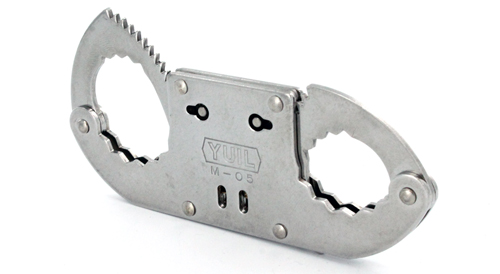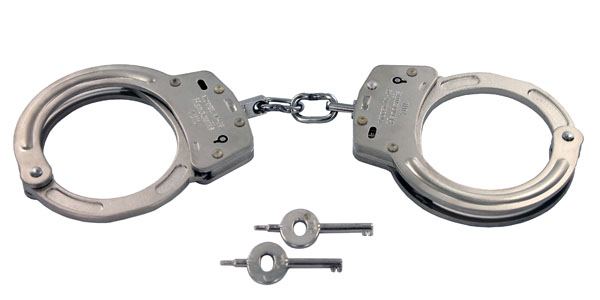Guest post by Ralph Goodman
The modern advancements in handcuff technology can make the use of restraints seem deceptively straightforward. For the most part, these devices are rather intuitive, but there are still things about handcuffs that everyone should know before using them. You want to know a bit about the device so that you can understand how to use it most effectively. This information is only intended for lawful restraint and should also not be used to avoid law enforcement custody. With that being said, let’s talk about the things you need to know before using handcuffs.
- How the Locking Mechanism Works
Knowing how the locking mechanism on your handcuffs work is going to allow you to get the most out of the restraints. Say for example you have double locking handcuffs. Failure to engage both locking systems means you are not applying the maximum amount of security. But not all double locking mechanisms are the same. You might need a key to depress a push pin double lock or use just have to use your thumb to activate the double locking feature. It is of the utmost importance that you know the full extent of the security you can get out of a pair of handcuffs and how to use it.
More than how to lock your handcuffs most effectively, you should also know how the cuffs are locking. Throughout the history of handcuffs, these devices have gone through many iterations. However handcuffs have not changed that much in recent decades, and the most likely type of handcuffs that you will encounter will use a ratcheting system that allows the cuffs to tighten and not to loosen. It is only when the proper key is inserted that the locking pawl on the ratcheting mechanism can be separated from the teeth of the cuffs. With this separation, the teeth no longer catch on the pawl and the cuffs can slide freely open.
- The Vulnerabilities of Your Restraints
Once you know how the locking mechanism for your particular set of handcuffs works, you can better understand their vulnerabilities. In the case of handcuffs that use a ratchet and tighten method of securing, it will be possible for restrained individuals to shim the lock. This method of escape relies on using a small feeler gauge that is inserted between the teeth of the cuff and locking pawl. This creates a boundary similar to the gap that is caused by inserting the proper key.
In understanding your locking mechanism, you have likely discovered that standard handcuff keys do not commonly have unique key profiles. This means that handcuff keys are not hard to come by. And even if the key is not widely available, any lock can be picked. But if none of this is a concern based on the type of individual in custody, a thorough search process, etc., there are still ways that certain restraints can be snapped or leveraged into breaking. Be sure you know the most likely way people will attempt to escape your handcuffs.

- How To Observe The Detainee
The vulnerabilities of your particular restraints will give you insight into how it may be necessary to watch the person under your charge. With restraints that use plastic cables, such as zip tie material, it is important that you do not allow the restrained individual to lift their arms over their head. This is a commonly used method for snapping these restraints. If they begin trying to tighten the restraints this can cause a few issues, but it is often done to prep the restraints for an attempt at snapping.
For more substantial metal handcuffs, be aware that the person being restrained might attempt to leverage the chain connecting the cuffs (if this is the type of connection being used) to snap the chain. Be vigilant for fidgeting shoulders and the sound of metal on metal. Unless the person under your surveillance is extremely proficient with escape, you do not have to be overly concerned with shimming, picking, or the use of concealed handcuff keys. These are more advanced methods, and without the proper tools/materials, they are not likely to even be attempted. Just to be safe, if the person’s hands are behind their back, keep an eye on their wrists.
- The Dangers of Improper Use
After you are getting the most out of your restraints, knowing the most likely ways someone is likely to try to exploit their handcuffs, and keeping an eye on them to make sure no attempt they make is successful, it is important to make sure you have done everything properly. Issues such as handcuff neuropathy (wrist compression that damages nerves) have largely been curbed due to advancements in handcuff technology, but this type of thing can happen if the cuffs are too tight, or there is no handcuff wrist protection.
Once someone is under your charge, it is important that they are not injured by their restraints. Having the handcuffs too tight is the most likely way to do harm. If restraints must be kept tight, be sure that this is not done for an extended period of time, but always avoid any unnecessary tightness. Restraints can also tighten due to the movement of the person wearing them. Periodically check that the individual is not harming themselves by improperly using the handcuffs.
Conclusion
Knowing about your handcuffs’ locking mechanism(s) will also give you insight into how they might be exploited. If you know how the restraints are vulnerable, you can take steps to prevent this through observation of the detainee. From there, it is just a matter of making sure you do not make a mistake and do harm with your handcuffs. These mistakes largely center around the tightness of the handcuffs around a person’s wrist, which the person wearing them may exacerbate. Use this information lawfully to ensure the safety of yourself and your detainee.

